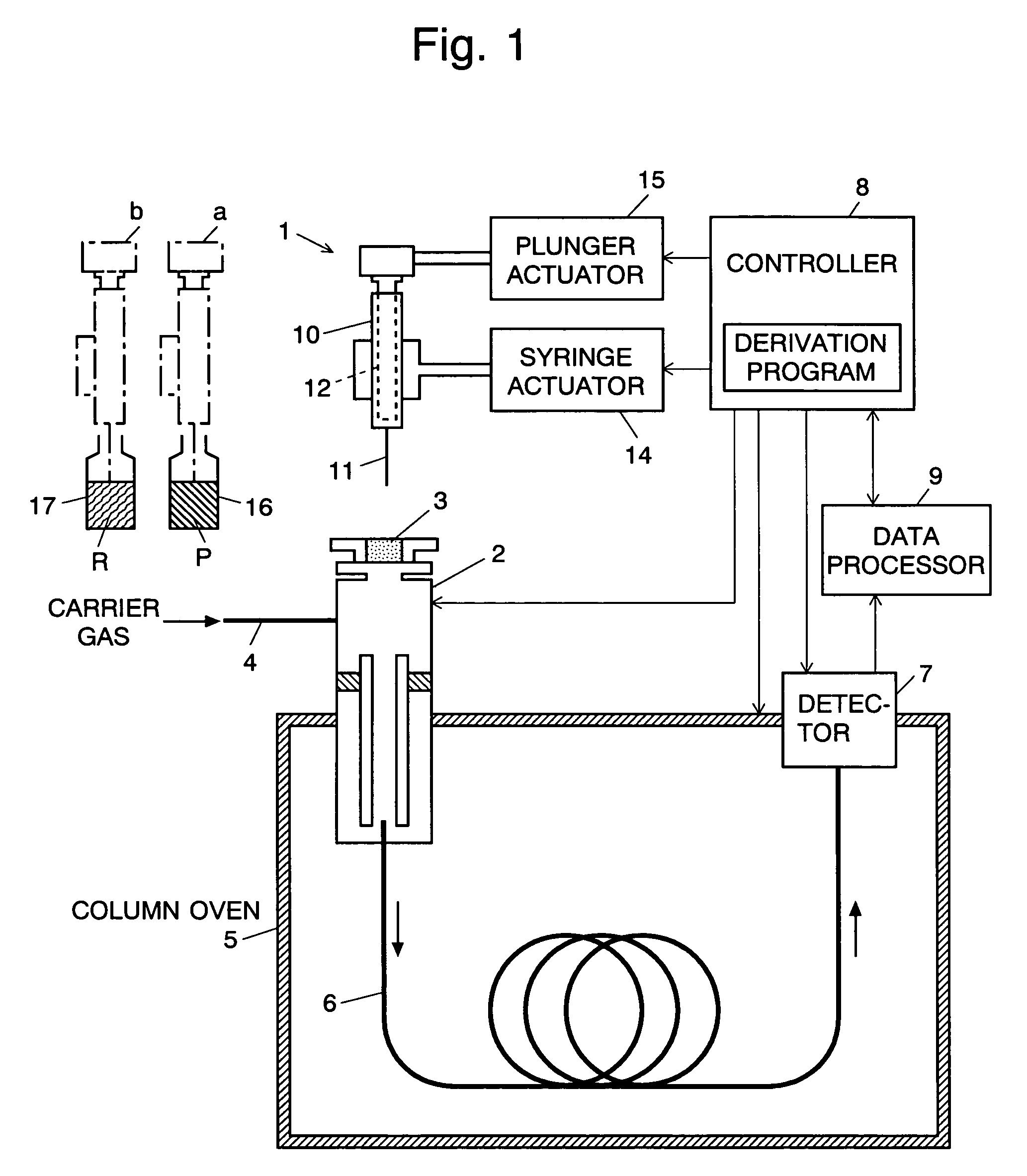Gas chromatograph sample injector
a gas chromatograph and injector technology, applied in the field of gas chromatograph analysis, can solve the problems of deteriorating gas chromatograph analysis throughput, time-consuming and labor-intensive manual derivation process, and long time consumption, so as to improve the efficiency and throughput of analysis, improve the efficiency of analysis. the effect of throughput and high throughpu
- Summary
- Abstract
- Description
- Claims
- Application Information
AI Technical Summary
Benefits of technology
Problems solved by technology
Method used
Image
Examples
example
[0069]A test of the GC analysis was conducted using the gas chromatograph of the above-described embodiment. The target compound was methamphetamine (MA), an illegal drug, and the sample was human urine containing that compound. Methamphetamine as is can be detected only with a very low level of sensitivity by GC analysis. Therefore, it is necessary to convert it into a derivative. In this test, N-Methyl-bis[trifluoroacetamide (MBTFA) was used as the derivation reagent. The test showed that the gas chromatograph constructed as described previously could efficiently produce a derivative in which the active proton contained in the amine base of the methamphetamine was replaced with TFA. FIG. 5 shows a mass chromatogram obtained by analyzing the derivative with a mass spectrometer. Thus, the derivative (MA-TFA) obtained by the derivation process can be detected with high sensitivity, which enables methamphetamine to be identified and determined with high accuracy.
[0070]Tests of this ki...
PUM
| Property | Measurement | Unit |
|---|---|---|
| time | aaaaa | aaaaa |
| temperature | aaaaa | aaaaa |
| vaporizing temperature | aaaaa | aaaaa |
Abstract
Description
Claims
Application Information
 Login to View More
Login to View More - R&D
- Intellectual Property
- Life Sciences
- Materials
- Tech Scout
- Unparalleled Data Quality
- Higher Quality Content
- 60% Fewer Hallucinations
Browse by: Latest US Patents, China's latest patents, Technical Efficacy Thesaurus, Application Domain, Technology Topic, Popular Technical Reports.
© 2025 PatSnap. All rights reserved.Legal|Privacy policy|Modern Slavery Act Transparency Statement|Sitemap|About US| Contact US: help@patsnap.com



